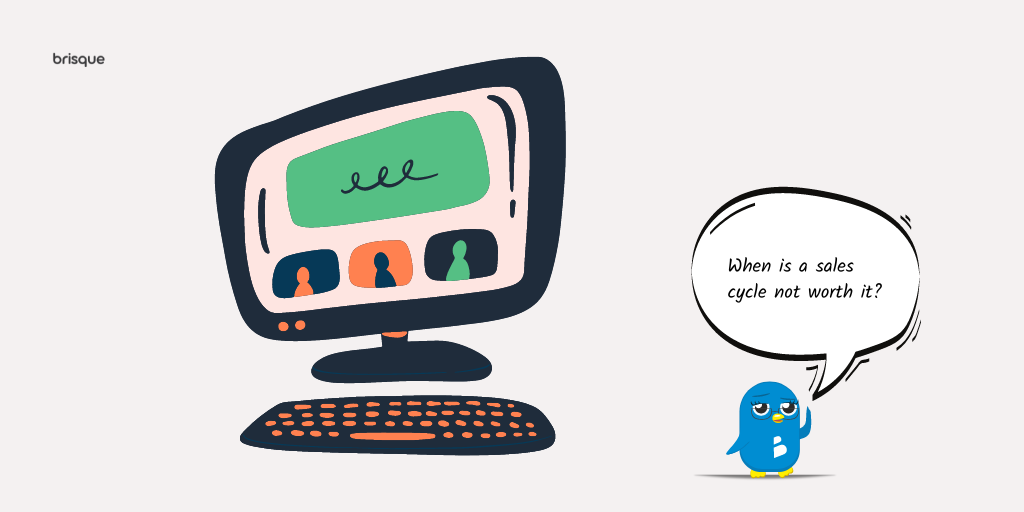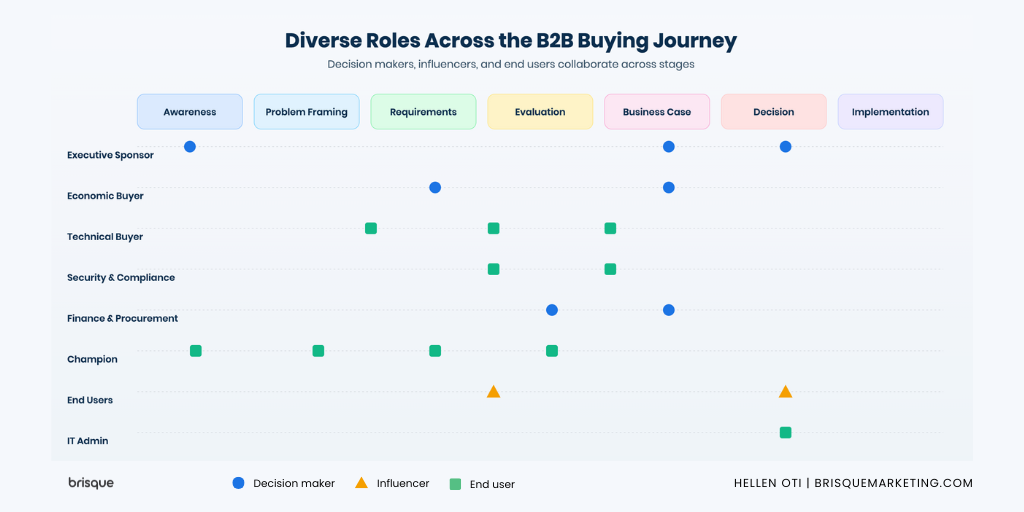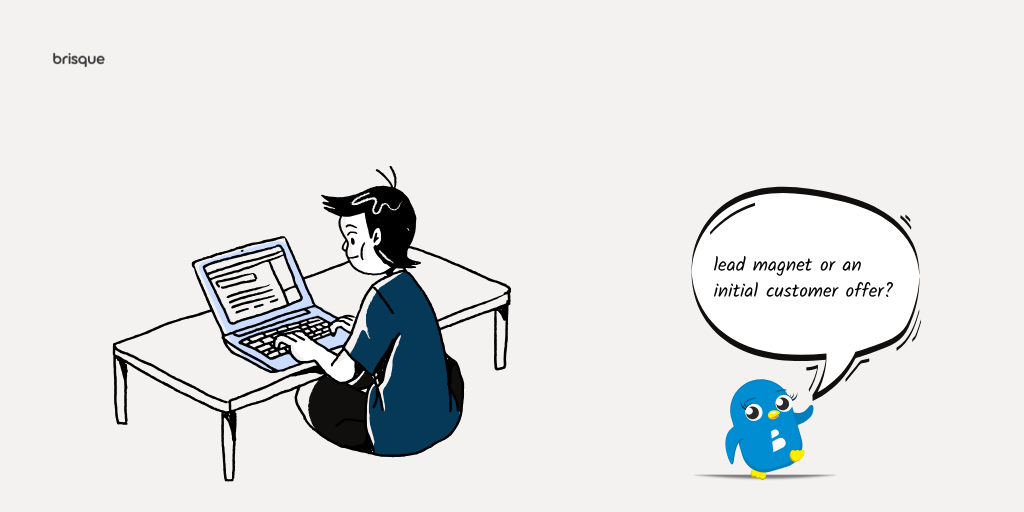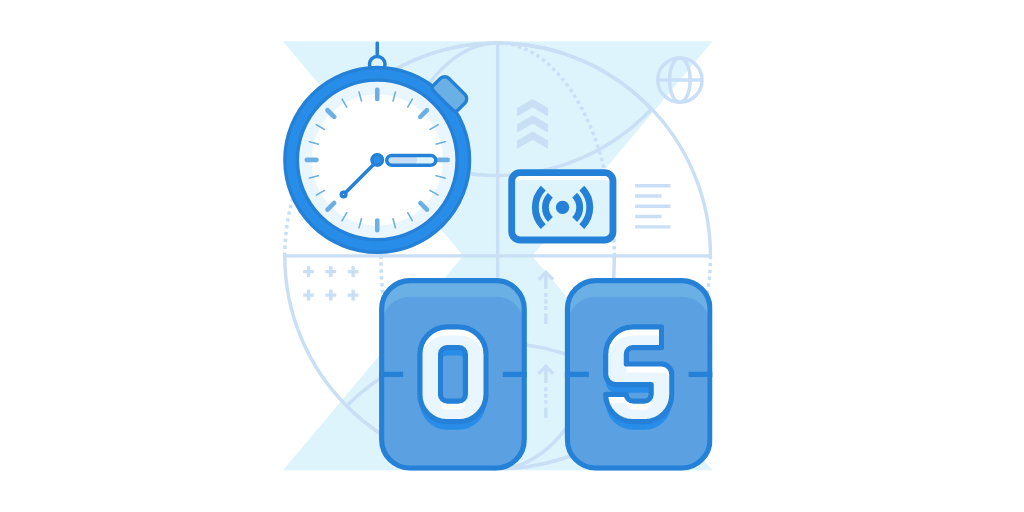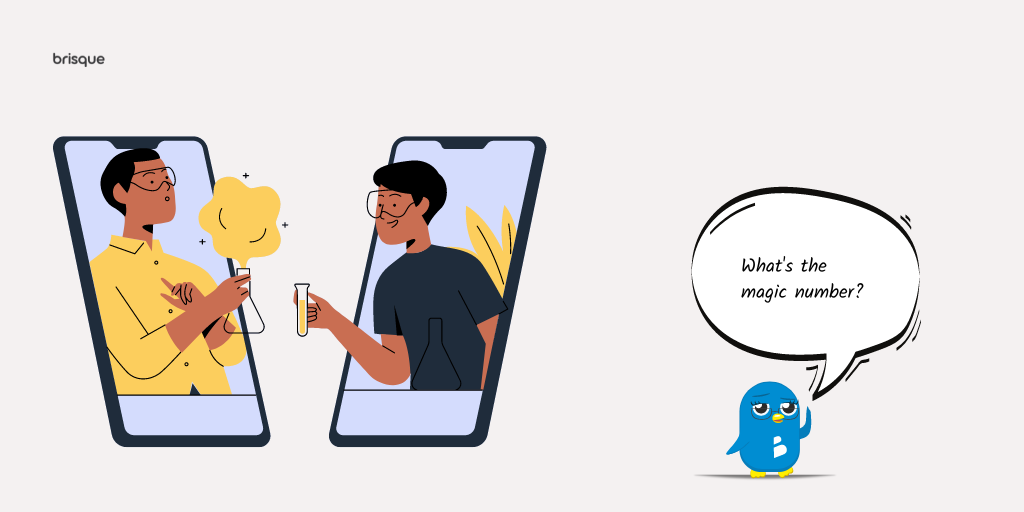Last Updated: 11/11/2025
Summary
Nearly 90% of global business buyers reported that their purchase processes stalled in 2023. Suggesting that, in certain instances, longer sales cycles are unavoidable, particularly in complex B2B sales processes where multiple teams must approve a purchase. As a startup business with limited resources, it is essential to find ways to shorten the sales cycle or determine when it’s best to abandon a lengthy one.
In this article, we will examine the cost of continuing to pursue a long sales cycle, with a focus on the business-to-business (B2B) sales process.
What makes a B2B sales process long?
Several factors influence the length of your sales cycle, including the complexity of the product, its cost, and the number of individuals involved in the purchasing decision. Typically, a complex B2B purchase consists of a buying group of six to ten decision-makers, according to Gartner.
For instance, a product priced at $100 typically has a shorter sales cycle compared to one priced at $10,000, particularly in an enterprise B2B buying process. Sometimes, lengthy sales processes are caused by factors beyond anyone’s control, such as when a key decision-maker leaves a company.
To optimize a long sales cycle, it’s crucial to implement strategies aimed at shortening it. This approach allows you to reach a decision—yes or no—more quickly, ultimately freeing up your resources for other opportunities. Let’s now turn to the question we aim to answer in this article.
When should you withdraw from a sales deal that’s gone on for too long?
Complexity is normal. Prolonged indecision is not. In a complex B2B sales process, prolonged indecision compounds cost.
While determining when to shift your attention away from a particular sales deal is not an exact science, you can establish a process for identifying indicators when the lengthy sales process is not worth the effort. For example, if there’s no executive sponsor. Standing meetings are reset without new information. Legal or security review stalled for 60 days. Each scenario is different, but there needs to be a set threshold on when it’s time to move on, or at least reduce the effort.
Evaluating a Long Sales Cycle: Start with Your Lead Grades
At the basic level, start with your opportunity grades.
It’s straightforward to determine whether you should invest effort in a grade (C) or (A) level opportunity. But this is just the beginning.
Sometimes the grade only tells part of the story.
For instance, you may have an opportunity with a (B-), but you can tell from the personal connection you’ve built with the project sponsor that they are working hard to get your deal closed and might be encountering some issues along the way. In that case, you can’t base your decision to pull out of an active sales cycle on just a grade. You’ll also need to consider that personal connection.
However, what about a case when the project sponsor is trying but not making headway, and the sales cycle seems to take up a lot of your time? When should you call it quits?
As a Startup Marketing Advisor, I help businesses develop data-based decision-making systems. Consequently, in addition to a lead grading system, the following guidelines help determine whether to continue a lengthy B2B sales process.
Here’s how you can calculate when you are making a loss on a long sales process.
Using this quick math test will help you determine if you are profiting or losing by continuing your lengthy sales process. To help you follow along, I’ve included all the sample information you need to perform the calculations for your specific situation. Simply replace my sample data with your real information.
Here’s what you need to know:
Sales Process Costs Average Sales Representative Salary: $55,000 per year or $26.44 per hour Hours spent on the deal: 26 × 4 = 104 hours, 4 hours a week for 6 months, about 26 weeks Sales Travel expenses: $2,000 Value drivers Deal Amount: $100,000 Average deal amount: $50,000 Customer Retention Time Period: 5 years The average number of customer purchases per year: 1 Profit Margin: 40%
Calculate the customer lifetime value (CLV) of your potential sale
The customer lifetime value is a useful metric that helps you understand the lifetime monetary value of a customer to your business. CLV is commonly calculated as the average transaction size multiplied by the number of transactions and the retention period.
Here’s the formula for calculating your customer’s lifetime value
Understanding customer lifetime value in both B2B and B2C businesses enables you to assess your marketing spend more effectively. As shown above, the traditional calculation of the CLV uses the average sale value because it assumes a more holistic view. However, for this analysis, we will modify the conventional CLV calculation slightly to use the deal amount.
When do I use the average value of a sale vs the actual deal value to calculate CLV when analyzing a sales deal?
When to use the deal amount
Use the contract’s deal amount to compute deal-specific CLV when most of these are true:
- Fixed subscription or maintenance fee each year.
- No meaningful usage swings.
- No tier changes expected in the first term.
- Renewal pricing is historically stable.
- Upsell is possible, but not central to your decision. Treat upsell as upside, not baseline.
When to use the average price
Use your average sale price when any of these are true:
- Usage-based or metered pricing.
- Wide discounting ranges across customers.
- Multiple purchases per year with inconsistent basket sizes.
- You do not trust a single forecasted price path for this account.
Based on this calculation, if you win the deal and the customer stays with the company over the average period of 5 years, you would make $200,000 from the customer.
“Treat time as a cost, not an afterthought”
Now, let’s take a look at how much of our resources we’ve spent so far on the deal.
By looking at the customer lifetime value vs. the expenses incurred so far, one can argue that the sales representative should keep working on the deal.
But not so fast!
While this calculation helps you gauge your expenses, you may end up ignoring your opportunity cost of not working on other deals during that time.
How to calculate your opportunity cost in a lengthy B2B sales process
To calculate the opportunity cost of continuing to work on a potential sales deal, here’s what you’d have to look at:
In this case, the average sales cycle lasts approximately two months and typically involves a deal valued at $50,000.
Since the sales deal has been running for six months, you could have technically worked three smaller deals within that time (6 months / 2 months = 3 deals).
So, back to our customer lifetime value calculation, let’s calculate the customer lifetime value for three deals, each valued at $ 50,000.
Again, we will use the modified customer lifetime value calculation, which uses the deal amount.
Therefore, to calculate the opportunity cost of the long sales process, we use the standard opportunity cost calculation.
That equates to the following:
We can conclude that it is time to close out the long sales deal because we are now running at a loss. Given this, it is reasonable to reallocate your time to higher probability opportunities.
Longer cycles can creep up without you noticing, which increases the risk of hidden costs over time. In 2024, according to SaaStr, 58% of teams reported that sales cycles were even longer than the previous year.
Final Thoughts: implement a ‘make or break’ sales effort benchmark
It’s beneficial to implement a ‘make or break’ sales cycle process, where a salesperson must decide whether to continue pursuing a sales deal or to shift their focus elsewhere. The ‘make or break point’ often depends on your average sales cycle duration.
Action step: Audit one active long-term deal using this approach today, then decide whether to invest more effort or disengage.
Manual disengagement doesn’t have to mean killing the deal
The good news is that, thanks to marketing automation, reducing your manual efforts doesn’t necessarily mean complete disengagement. You can add sales opportunities that are progressing more slowly than expected to a nurturing email list. Maintain a paced sequence that keeps your business top of mind without necessarily requiring an immediate action. Essentially, you free up your time, and also keep the door open for prospective customers to re-engage later.
Key Takeaways:
- An easy starting point for evaluating whether your deal effort is worth it is to examine your lead opportunity grade.
- First, find the cost of continuing to run a sales cycle by calculating your sales expenses.
- Then, calculate the opportunity cost of potential lost sales for the duration of the sales cycle.
- Your final deal cost is your opportunity cost + your sales expenses.
- You don’t have to “kill” deals completely. You can decide not to actively pursue the deal, but continue to send an automated follow-up.

